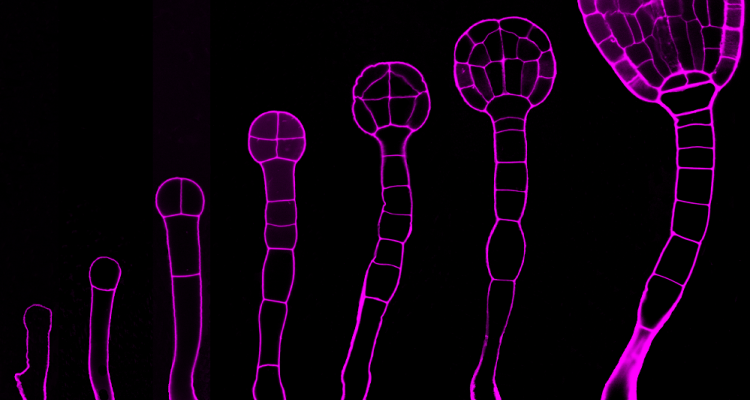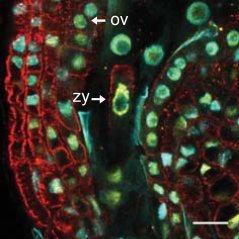
Nodine Group - RNA Biology of Plant Embryos
Soon after fertilization of the egg and sperm, the zygotic genome becomes transcriptionally activated in plants and drives a series of coordinated cell divisions and cell-type specific gene regulatory programs to establish the basic plant body plan. Moreover, epigenetic marks associated with gene regulation are re-established across the genome during this early phase of plant life. However, the mechanisms underlying the formation of initial cell types and epigenomic landscapes in early embryos remain to be fully explored especially in plants.
Titel

We currently use Arabidopsis thaliana as a model system to characterize the molecular basis of plant embryogenesis. For example, we perform transcriptomic approaches, including profiling RNA populations from individual cells, to explore how gene expression programs initiate and diversify across emerging embryonic cells that are the precursors to the most fundamental plant cell types. Our main research focus is on small RNAs, which do not encode proteins and are only 20-24 nucleotides in length. We have found that different groups of small RNAs are required for pattern formation by repressing transcription factors and other key developmental regulators, as well as the re-establishment of DNA methylation genome-wide during embryogenesis. To investigate how different populations of RNA molecules mediate cellular differentiation and (epi)genetic regulation during plant embryogenesis, we also develop and implement various bioinformatic, genomic, genetic and microscopy techniques.